Author: Chang Yan
What humans can hardly defeat might be mysticism, fate or laws of nature.
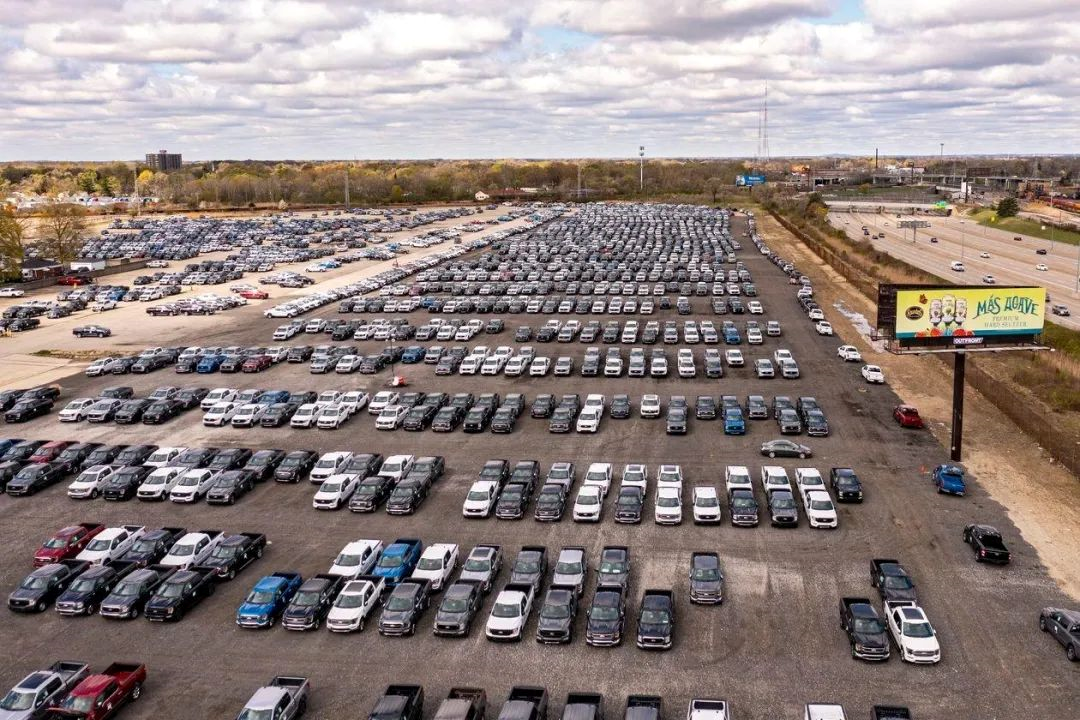
For example, no matter how much you disdain the quality of American brand vehicles, the US is still one of the world’s most important automobile markets.
Another example is that despite the hype of electric vehicles becoming mainstream in recent years, the Ford F-150 still consistently tops sales charts in the US market.
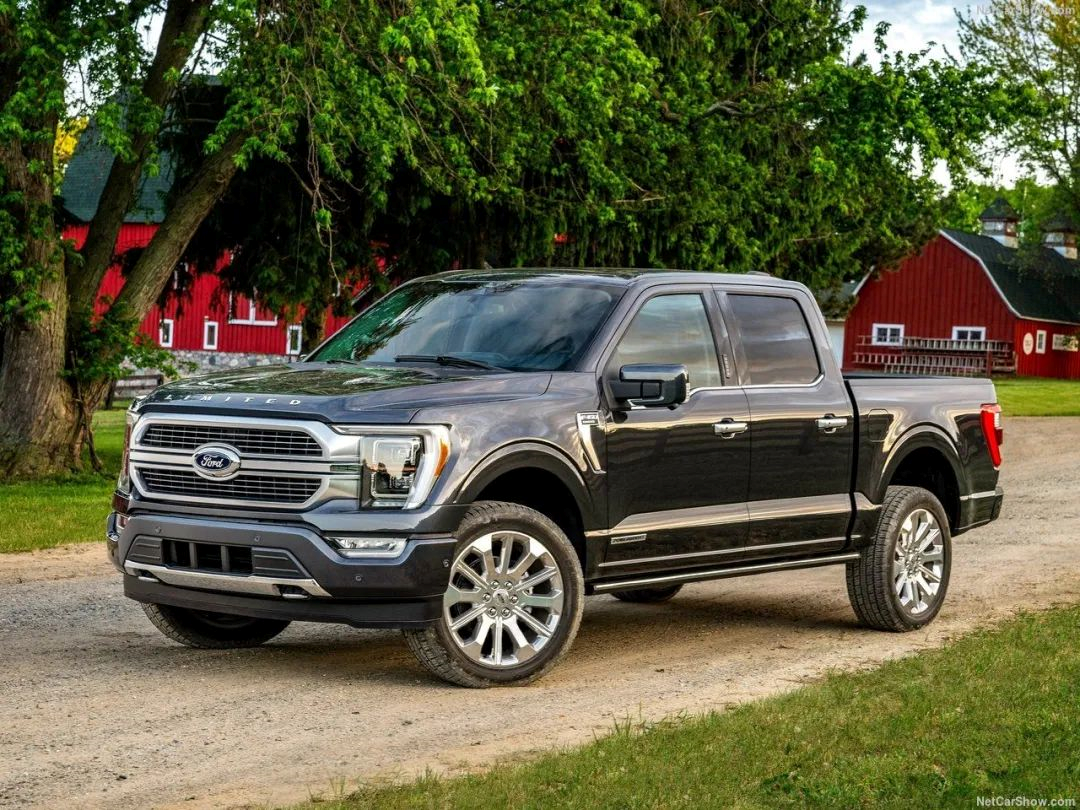
The concept of electric pickups might only be a dessert in the feast of innovation in China, a flash of insight during brainstorming sessions, but in the US, it’s the climax of a series of concerts and the ultimate question in exams.
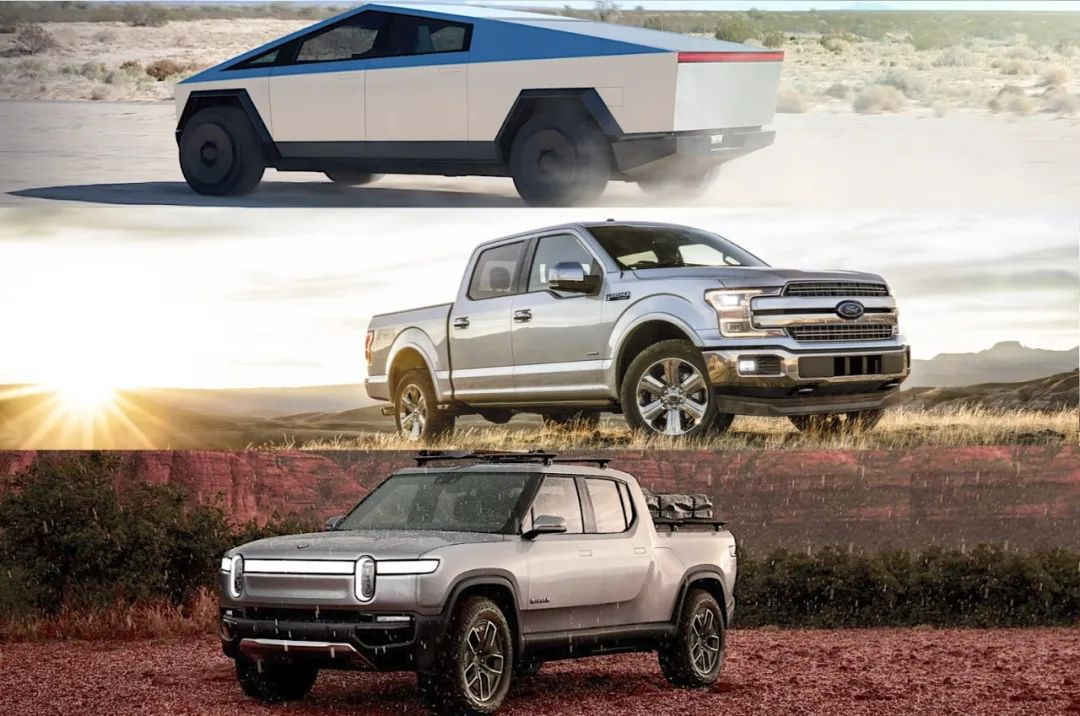
Tesla, traditional brands, and new US forces all showcase performance parameters and user scale of their respective electric pickup truck models, but no one knows the actual effect on users, which is uncertain.
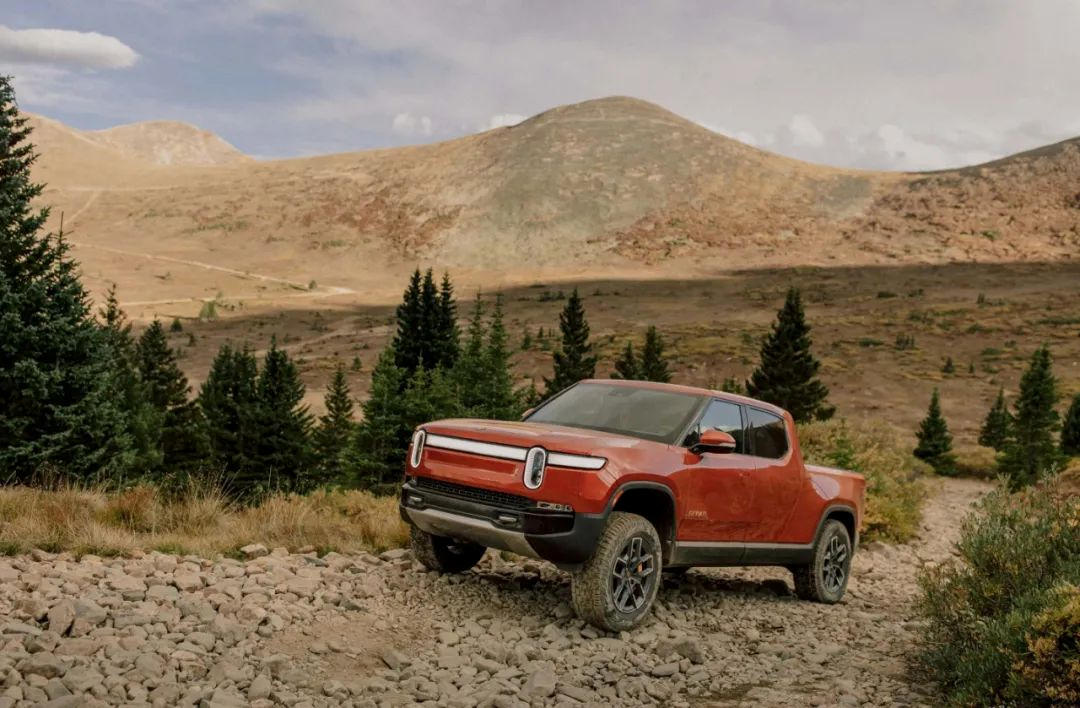
Finally, from current plans, the Rivian R1T will become the true first next-generation, pure electric pickup truck that is delivered.
And one of its employees has become the first tester to “test towing capacity with an electric pickup truck.”
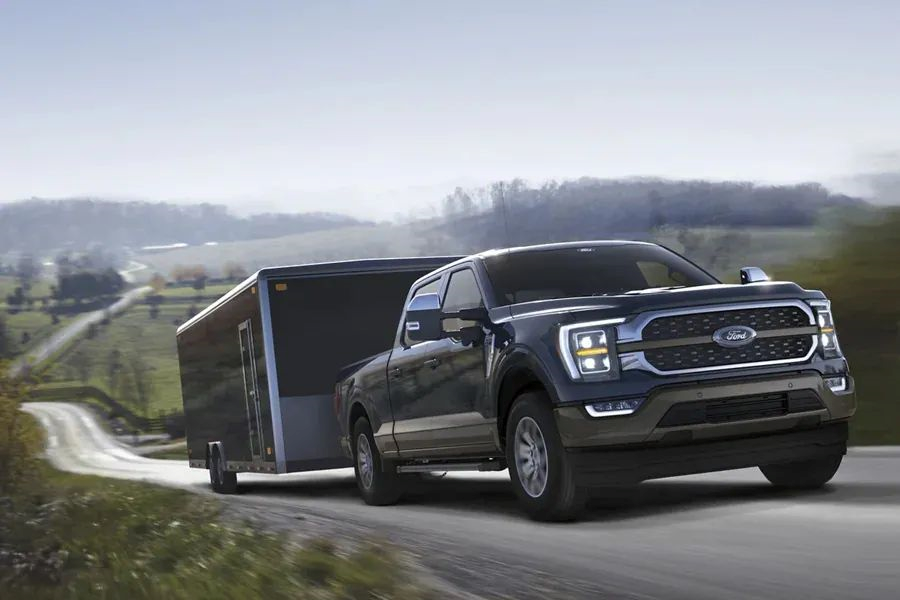
Aside from the convenience of “transporting both passengers and goods,” the versatility of a pickup truck is also reflected in attaching an accessory that expands its possibilities, whether it’s a RV, a motorcycle, or even a speedboat or airplane.
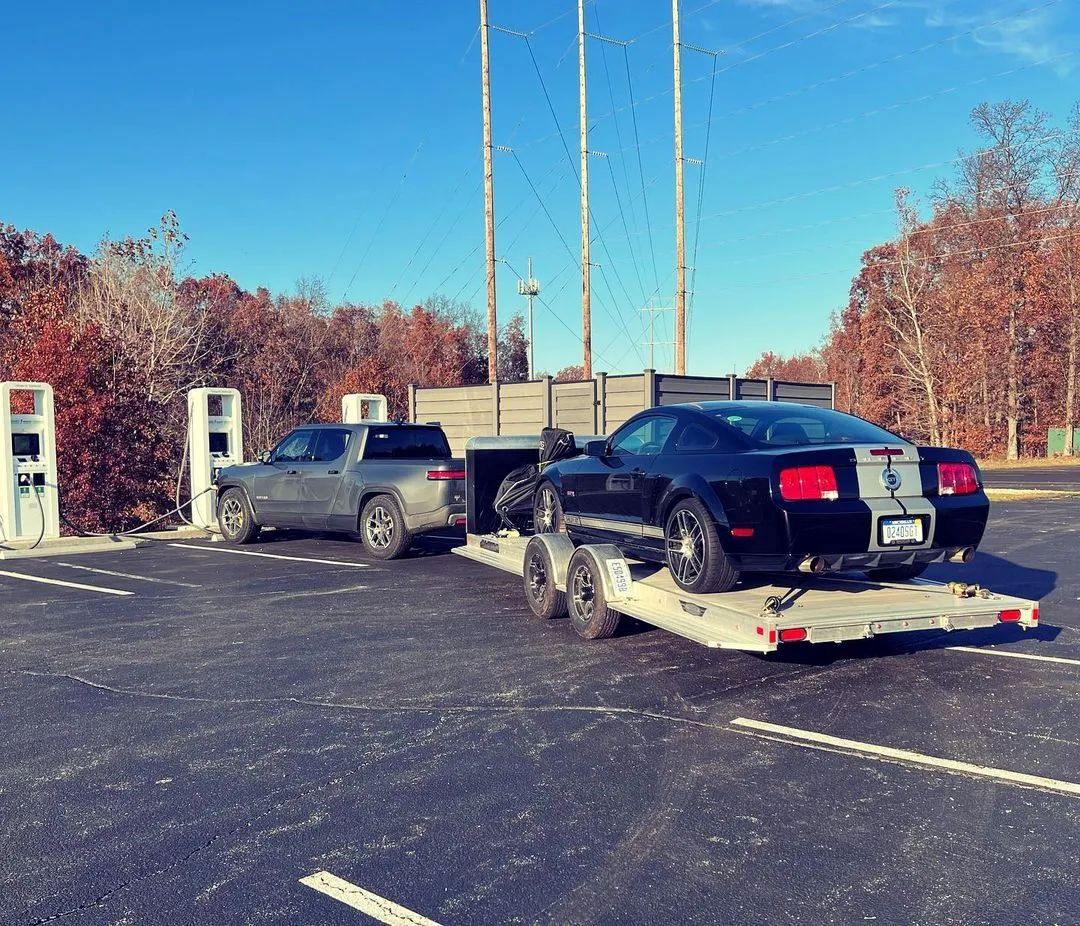
The Rivian employee has hitched an aluminum trailer from Aluma to the R1T and the “cargo” they prepared for their own product is meaningful, a Ford Shelby Mustang GT representing the traditional American automotive spirit.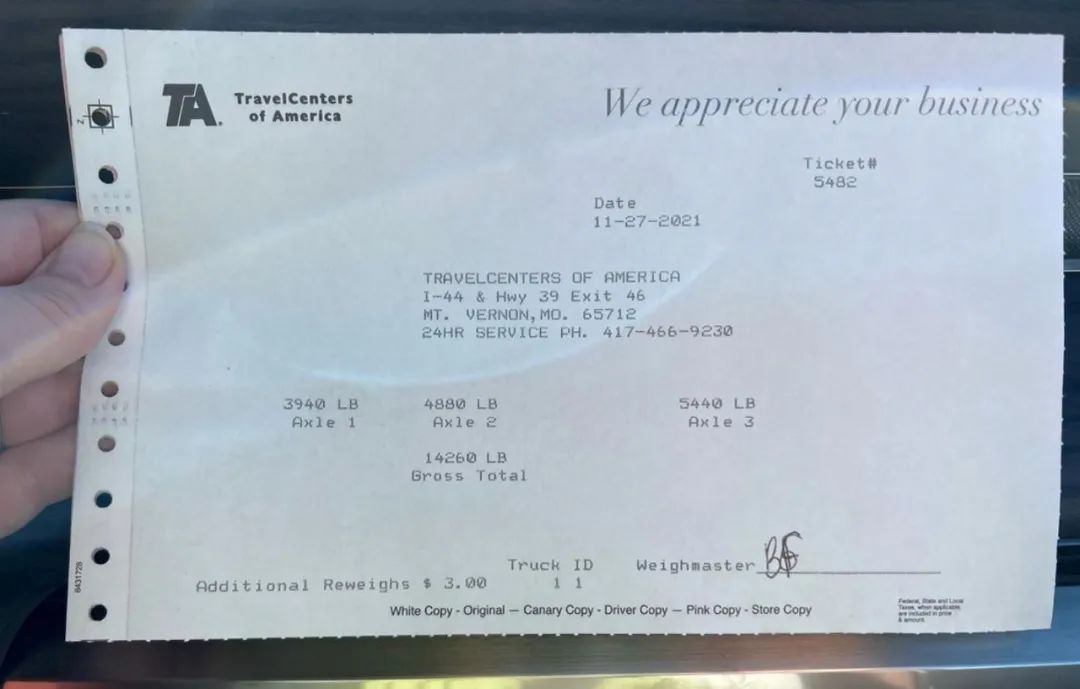
The two items combined weigh a total of 6464 kilograms.
Meanwhile, the net weight of the R1T is 3242 kilograms. In this towing test, Rivian’s power system not only has to cope with a body that is already one of the heaviest in the world of electric vehicles, but also has to tow a load twice the weight of the vehicle.
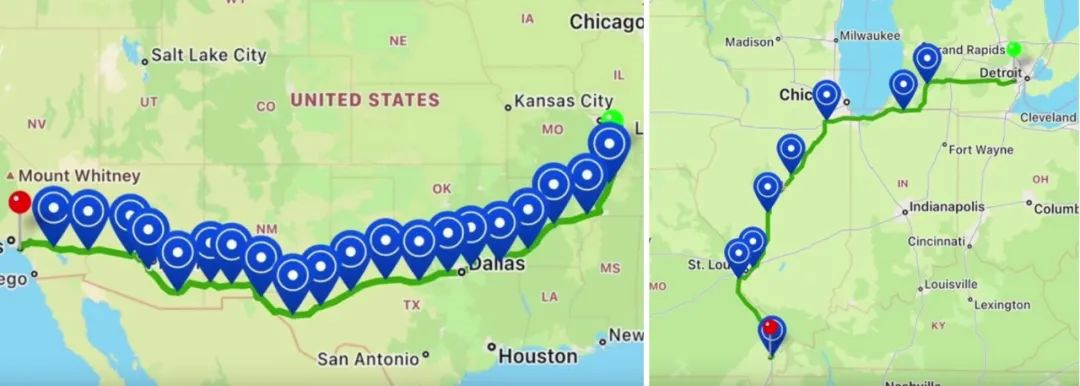
The planned journey was from Michigan to Los Angeles, covering approximately 4344 kilometers in total.
Now for the spoiler: the journey was successfully completed, and the R1T passed the test with flying colors, but the three major obstacles of electric vehicles were all fully demonstrated.
Obstacle One: Range Drops
Basically, all the unfavorable factors that can affect electric cars were present in this trip. The vehicle was very heavy, and the weather was very cold.

In November in the United States, many places along the way were colder than Beijing.
Shortly after departure, they found that the car’s range had dropped to about half of the range of a single charge for a regular bicycle.
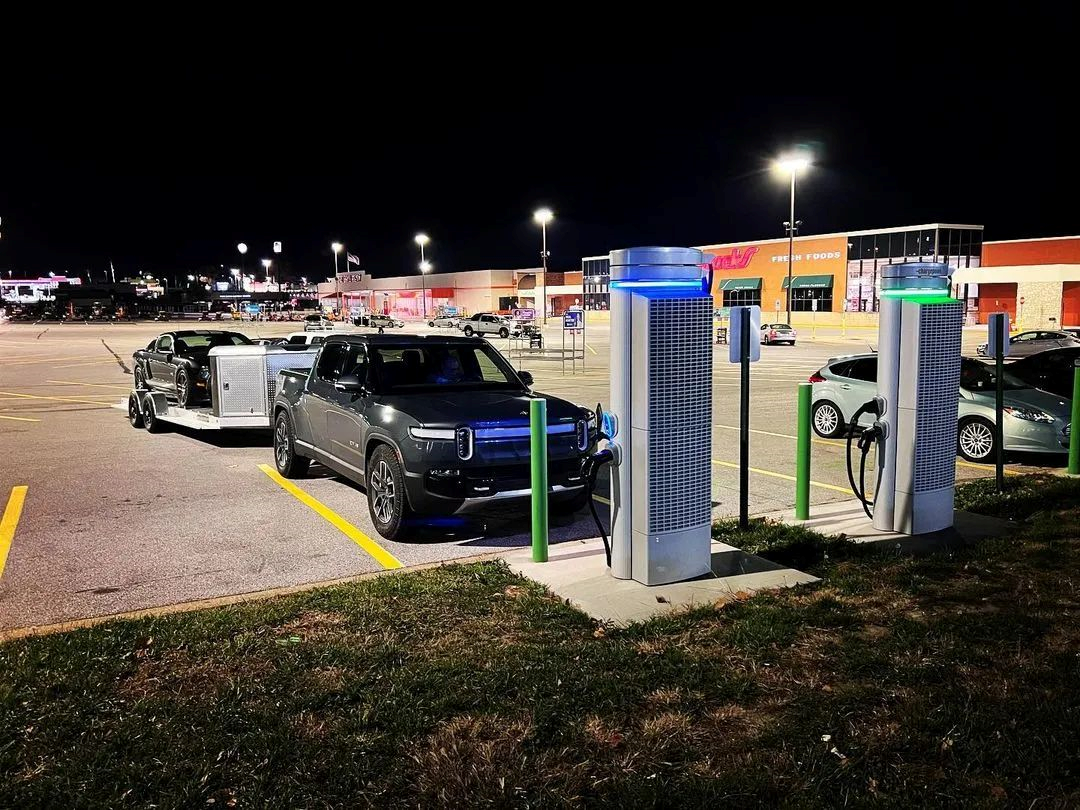
They were driving the R1T with the long-range version of the big battery, which has an EPA range of 505 kilometers, and half of that is 253 kilometers.
And that’s not all. As I mentioned before, the experience of using public charging stations is “cutting short the beginning and the end” for electric cars, as it’s not always possible to fully charge the battery every time or to use it until it’s fully discharged. This further compresses the range of a single charge.
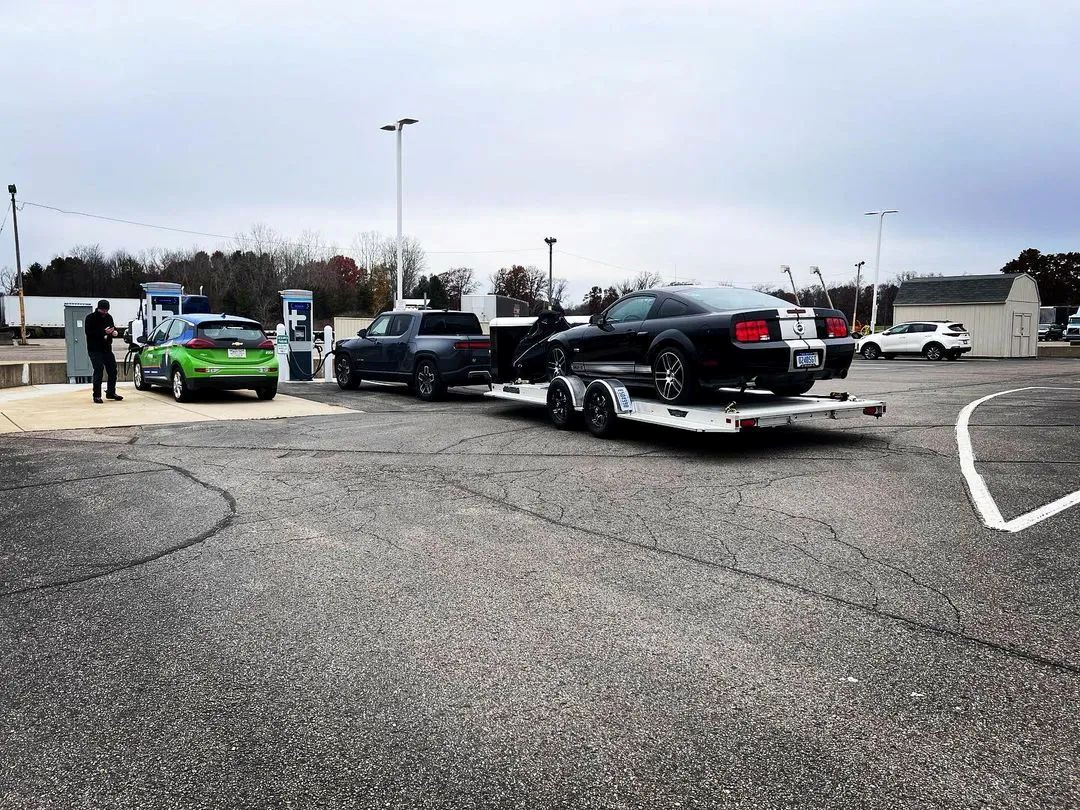
Therefore, they estimated that their single trip range would be between 160-190 kilometers.
By the way, someone at “The Fast Lane Truck” once tested the towing capacity of a Model X, and the results were even crazier, with the range decreasing to one-third of EPA rating.
Obstacle Two: Charging Time
“If you’re good at math, physics, and chemistry, you won’t be afraid to travel around the world.”
This statement is indeed true, as they quickly realized on the road that their math calculation was completely accurate.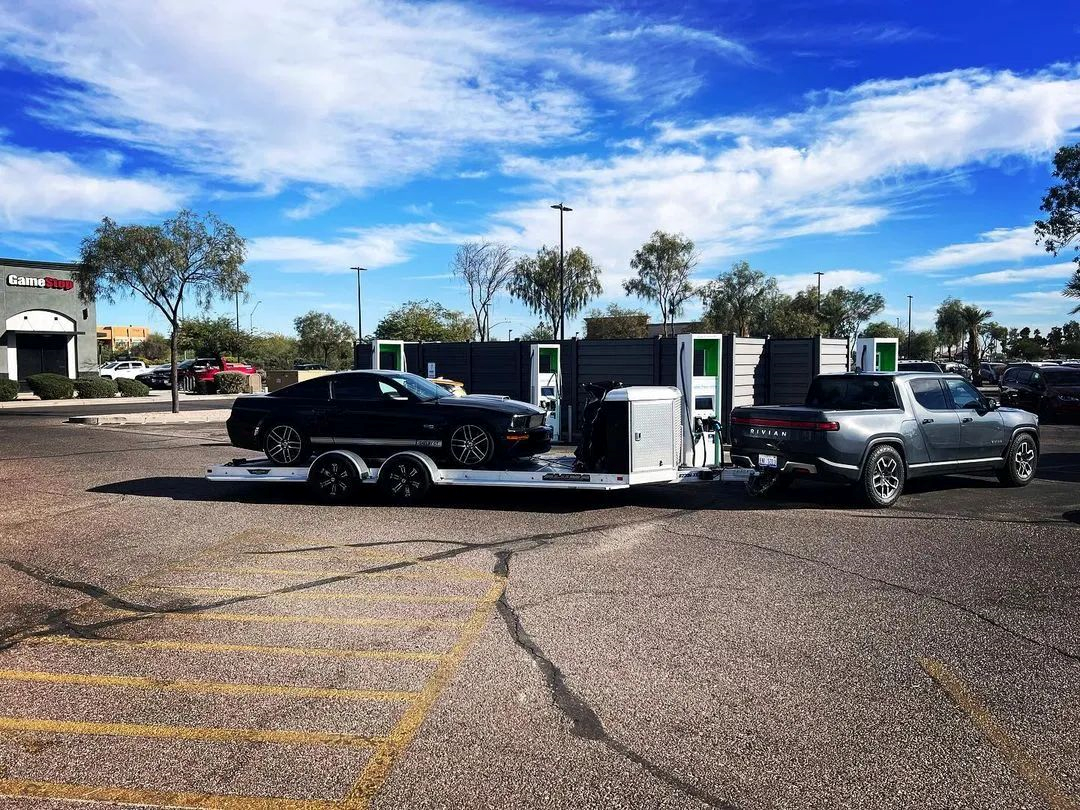
However, they only guessed the lower limit and didn’t guess the upper limit.
The actual maximum distance that can be traveled is just the theoretical lower limit that was calculated earlier.
After a few charging sessions, they found that the fastest charging interval for the R1T was between 16% and 80% battery SOC, meaning only 64% of the battery capacity was being used efficiently.
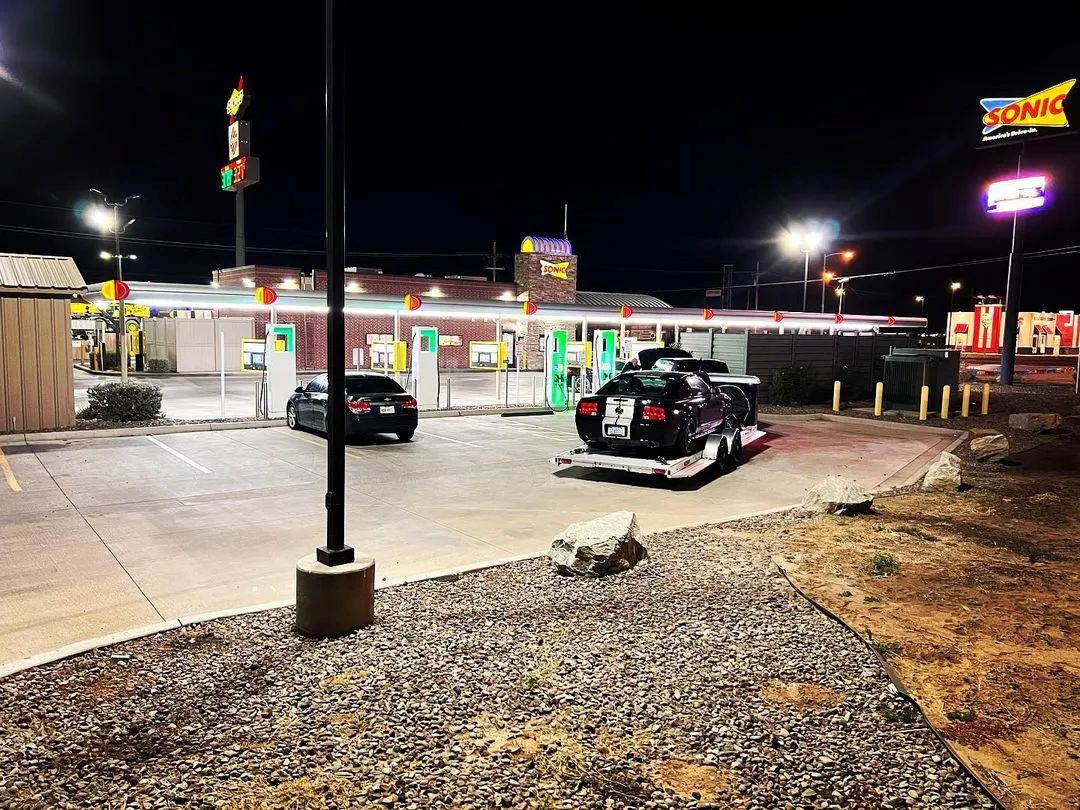
At the same time, Electrify America is the most commonly used charging service provider on American highways, and when planning a trip, it is necessary to consider whether there are suitable stations available for each stop.
Therefore, the final statistics show that every 160 kilometers, a stop must be made, and the average charging power is about 86 kW.
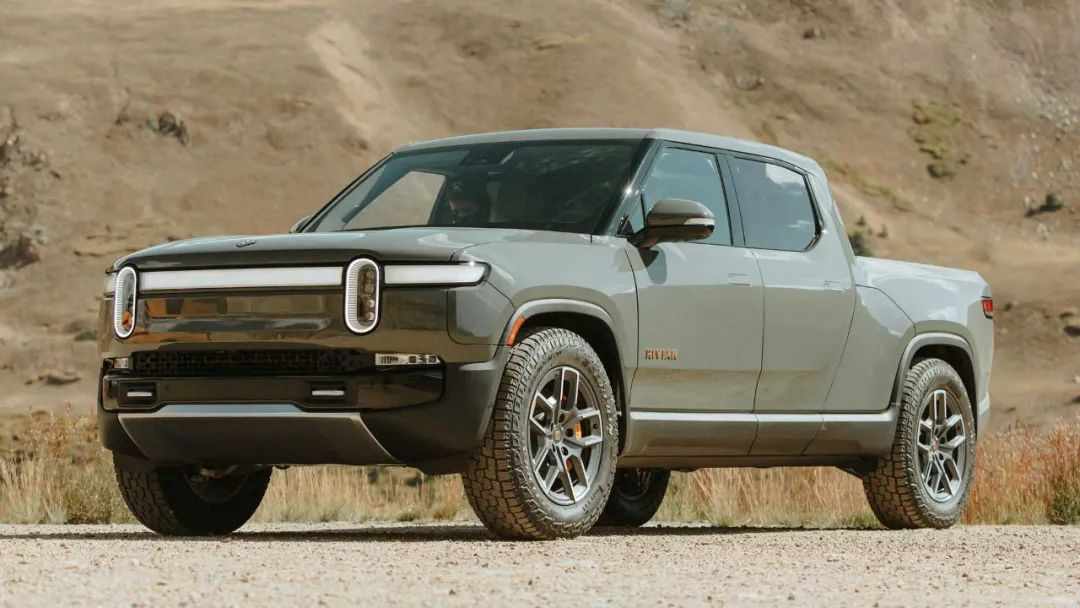
Converted, driving 160 kilometers in the R1T takes 1-1.5 hours, followed by charging for about 1 hour.
They charged for a total of 28 hours on this trip.
Challenge Three: Charging Spots
Even for single bikes, we often talk like Tang Seng: it’s better to have the charging port at the back.
It can be seen that it is not easy to park an electric car at a charging station.
Imagine what it would be like to enter a charging station with a trailer behind you with a total length of around 12 meters.
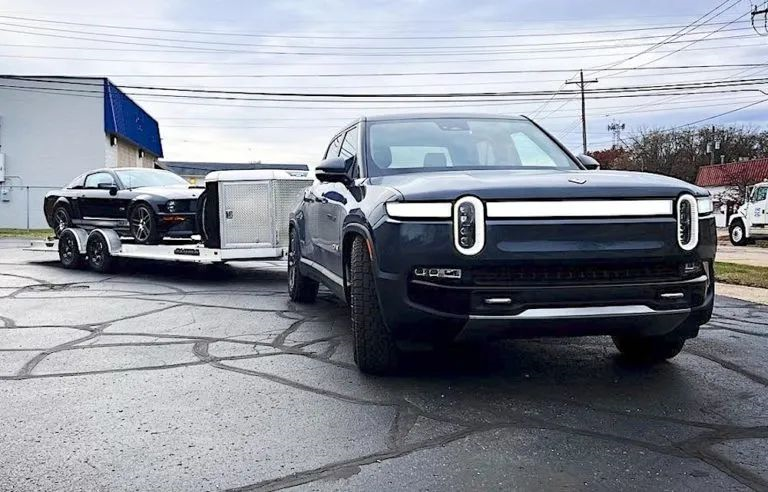
Although the United States is vast and sparsely populated, although parking spaces in the United States are huge, and although Americans are used to pickup trucks.
I’m sorry, all charging stations still don’t consider the charging problem when electric pickup trucks are towing.
This often forces them to disconnect and reconnect vehicles in some charging stations.
And they often patiently explain why they need to occupy multiple parking spots at once.
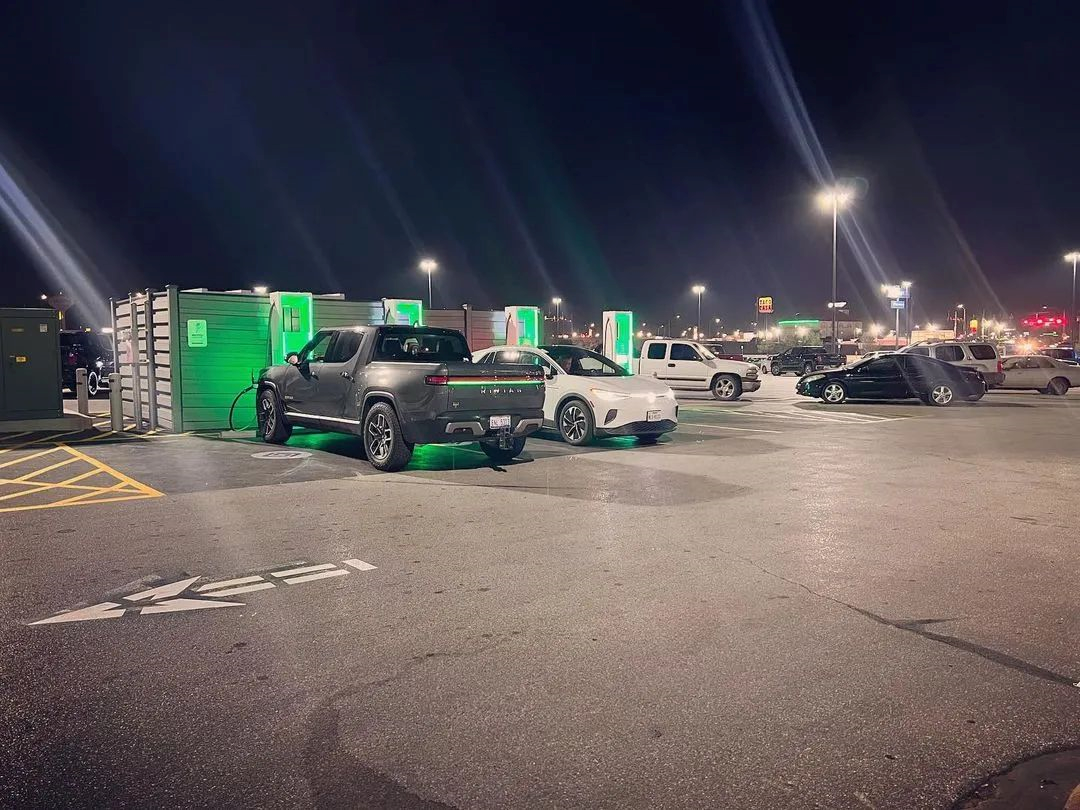
For electric pickup trucks, this may be a bad story, or it may be a good story.
Just yesterday, the Cybertruck announced the power plan of 4 motors, and the Ford F-150 Lightning confirmed delivery next year.
Here is the English Markdown text with HTML tags preserved:
No matter what, this is an era that everyone must face.
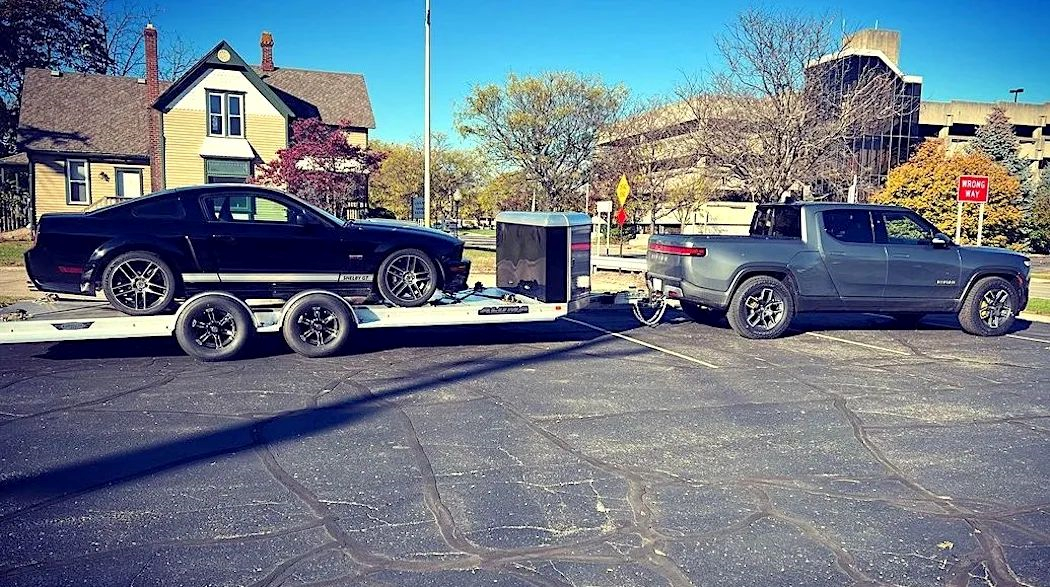
Some say that perhaps the towing experience of electric pickup trucks can only be solved in 10 years, when the battery life will be long enough and the energy efficiency will be good enough.
But who can say for sure?
After all, 10 years ago, we couldn’t even find an electric car that could stably run at a speed of 160 kilometers with one charge.
This article is a translation by ChatGPT of a Chinese report from 42HOW. If you have any questions about it, please email bd@42how.com.
